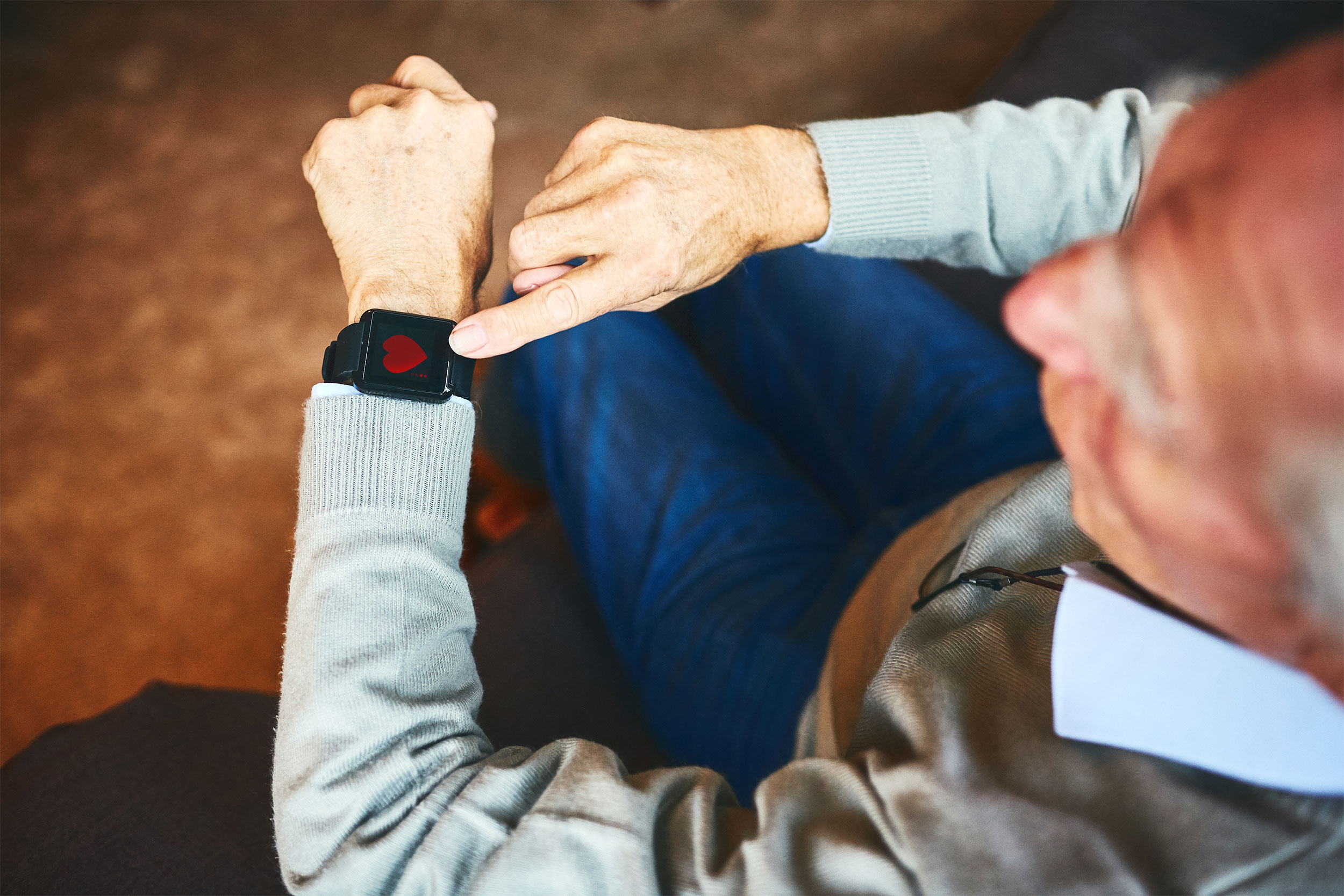
Smart trackers may predict health risks in older adults
Researchers find wearable devices detect circadian disturbances associated with age-related decline
Wearable devices that measure daily patterns of circadian rest-activity rhythms may be able to predict frailty-related health risks more than six years before an incident occurs, according to a new study out of Harvard-affiliated Brigham and Women’s Hospital.
The results are published in Nature Communications.
Frailty, or age-related decline in physiological function, is a common condition in older populations that increases their vulnerability to adverse health outcomes. Disturbances in daily patterns of rest and activity have been previously linked to neurodegenerative diseases like Alzheimer’s disease and Parkinson’s disease.
Research has also shown that aging changes circadian rest-activity rhythms, with older people often preferring to keep earlier hours than younger adults.
“Our study demonstrates that wearable devices could represent an important tool for long-term health monitoring in older adults,” said lead author Ruixue Cai, a doctoral candidate in the Division of Sleep and Circadian Disorders. “Frailty can reduce quality of life and detecting it early or predicting who is at risk could help us intervene to promote healthy aging.”
The authors studied a cohort of 1,022 adults with a mean age of 81, recruited as part of the Rush Memory and Aging Project, who had been followed annually for up to 16 years. The researchers analyzed continuous rest and activity data from wearable devices, including measures such as the amplitude, stability, and variability of rhythms.
Over a follow-up period of over six and a half years on average, the team found that 357 participants developed frailty. Blunted, less robust, or inconsistent rest-activity patterns were associated with higher risk of incidence. These disturbances were also linked to faster worsening of frailty progression symptoms like decrease in grip strength, reduction of body mass index, and increasing fatigue. The findings were independent of characteristics such as age, sex, sleep duration, sleep fragmentation, and cardiovascular dysfunction.
The authors point out that circadian disruptions have been previously associated with sleep disorders, altered metabolism, and neuronal loss, suggesting an overlap between mechanisms behind frailty and cognitive impairment.
The study was limited to an older population with a mean age of over 80. Rest-activity patterns can be affected by seasonal variations and environmental conditions, and wearable devices can sometimes misinterpret sleep and wake cycles. Future studies with better sleep assessment are required to better understand the causal link between circadian disturbances and frailty.
“Wearable technology provides a holistic approach for detecting common indicators of disease,” said corresponding author Peng Li of the Brigham’s Division of Sleep and Circadian Disorders and the Department of Anesthesia, Critical Care and Pain Medicine, Massachusetts General Hospital. “Combining circadian rest-activity data with other clinical measures could help with early identification and intervention in susceptible populations.”
This work is supported by grants from the NIH, the BrightFocus Foundation Alzheimer’s Research Program and the Brigham Research Institute’s Fund to Sustain Research Excellence Program.




